Fish gills are crucial respiratory organs that enable fish to breathe underwater by extracting oxygen dissolved in water and eliminating carbon dioxide from their bodies.
Typically situated on each side of the fish’s head, these gills are shielded by a bony plate known as the operculum. The complexity of this organ varies among fish species, with distinct types, structures, and functions.
The article will discuss the different types of fish gills, their anatomy, function and mechanism in respiration
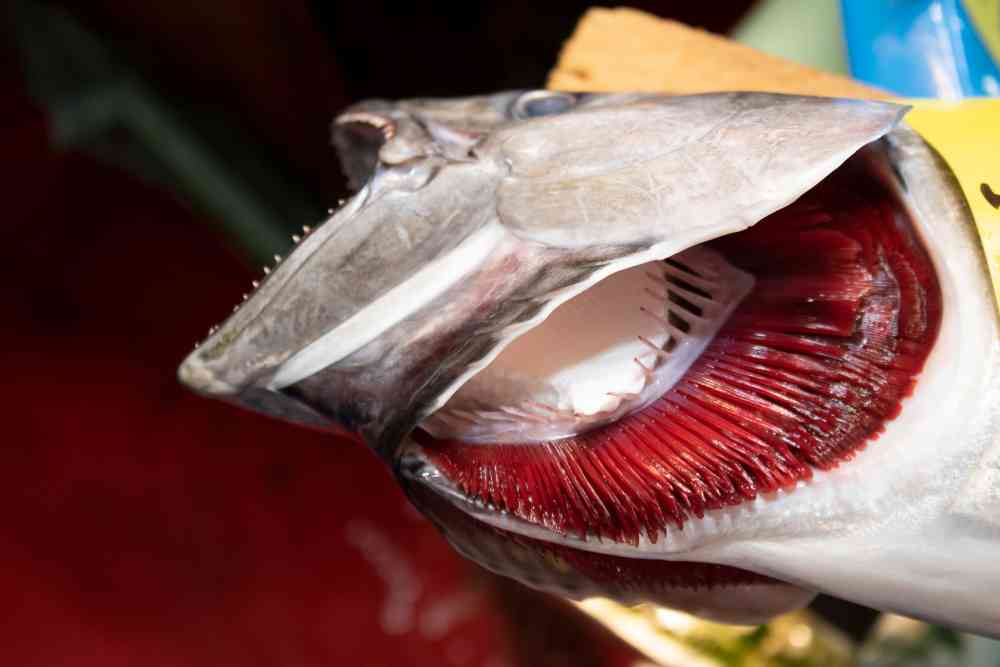
What Is A Gill?
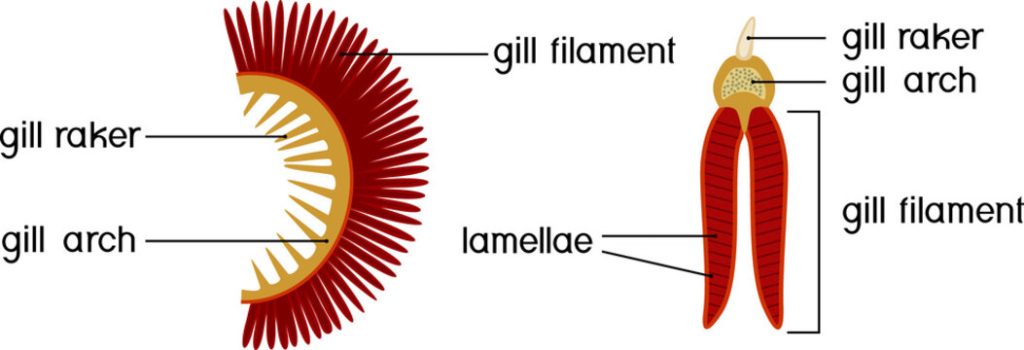
The term “gill” refers to the respiratory organ in many aquatic organisms, including fish. Gills are specialized structures that enable these organisms to extract oxygen from water and release carbon dioxide. Fish crustaceans and some amphibians, also utilize gills for breathing in aquatic environments.
A gill equates to four ounces. The number of gills on a fish depends on its species; some such as sharks possess five pairs while other smaller fish such as minnows may have three or four pairs.
Fish Gill Anatomy (Structure)
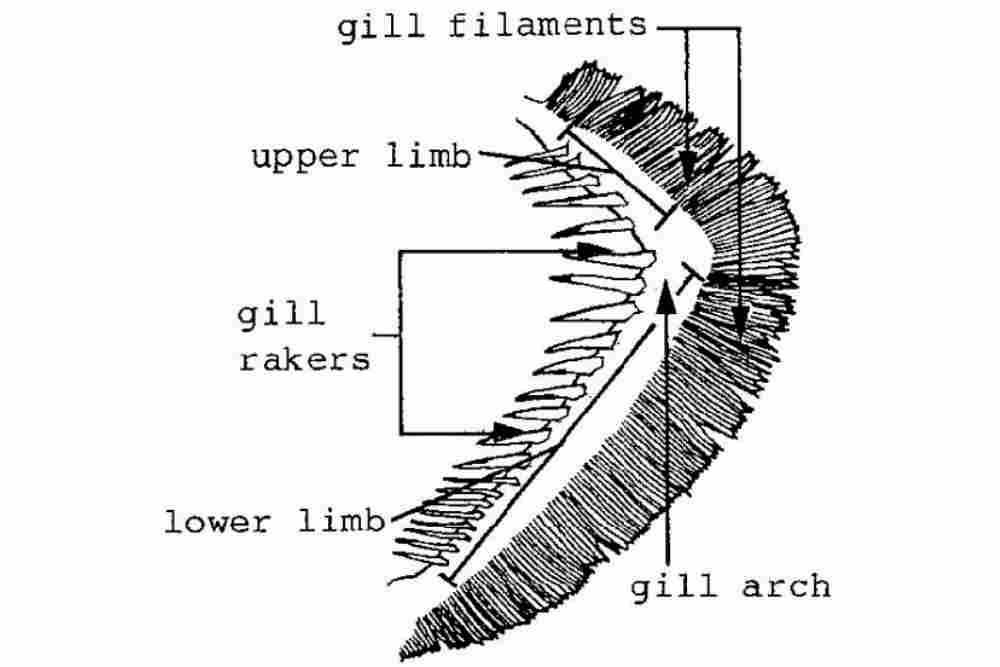
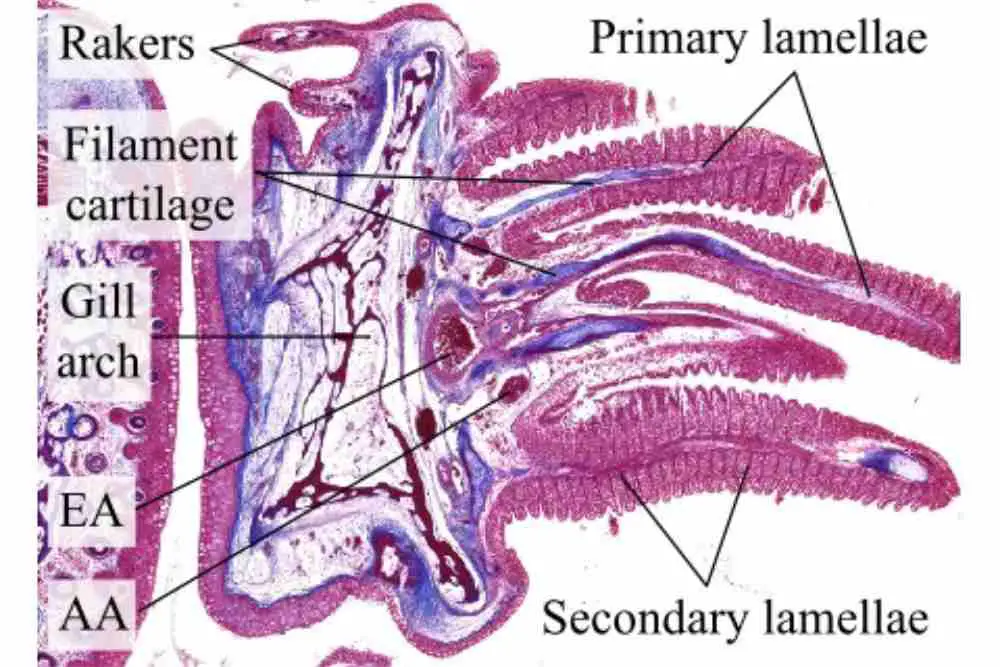
The gills of a fish are the organs that allow fish to breathe in water. A typical fish gill is made up of 3 parts. These three basic components are,
- Gill Arch
- Gill Filament
- Gill Lamellae
1. Gill Arches (Branchial Arch)
These are bony or cartilaginous structures that support the gill filaments. The gill arch basically support the gill structure.
Gill Rakers
Gill rakers are bony or cartilaginous structures that are found on the gill arches of fish. These are small, finger-like projections that protrude from the gill arches. The bony projection sieve the food particles.
These fairly stiff, tooth-like processes present in upper limb and lower limb. These racker have anterior and posterior portion.

Why Do Fish Need Gill Rakers? (Functions of Gill Rakers)
The number and length of this comb like structure vary species to species due to species specific feeding strategies. These structures serve several important functions in the respiratory and feeding processes of fish:
A. Particle Filtration:
One of the primary functions of gill rakers is to act as a filtration system. As water passes over the gill filaments during respiration, the gill rakers help filter out solid particles, such as plankton, algae, and detritus, from the water. This prevents these particles from entering and potentially damaging the delicate gill tissue.
B. Protection of Gill Filaments
Gill filaments are thin, delicate structures responsible for the exchange of gases (oxygen and carbon dioxide) during respiration. The presence of gill rakers helps protect these filaments by preventing larger debris and particles from reaching and damaging them.
C. Facilitation of Feeding
In certain fish species, especially those that are filter feeders, gill rakers play a crucial role in trapping and retaining food particles. As water is filtered through the gill arches, the gill rakers help in concentrating and directing food particles towards the esophagus for digestion
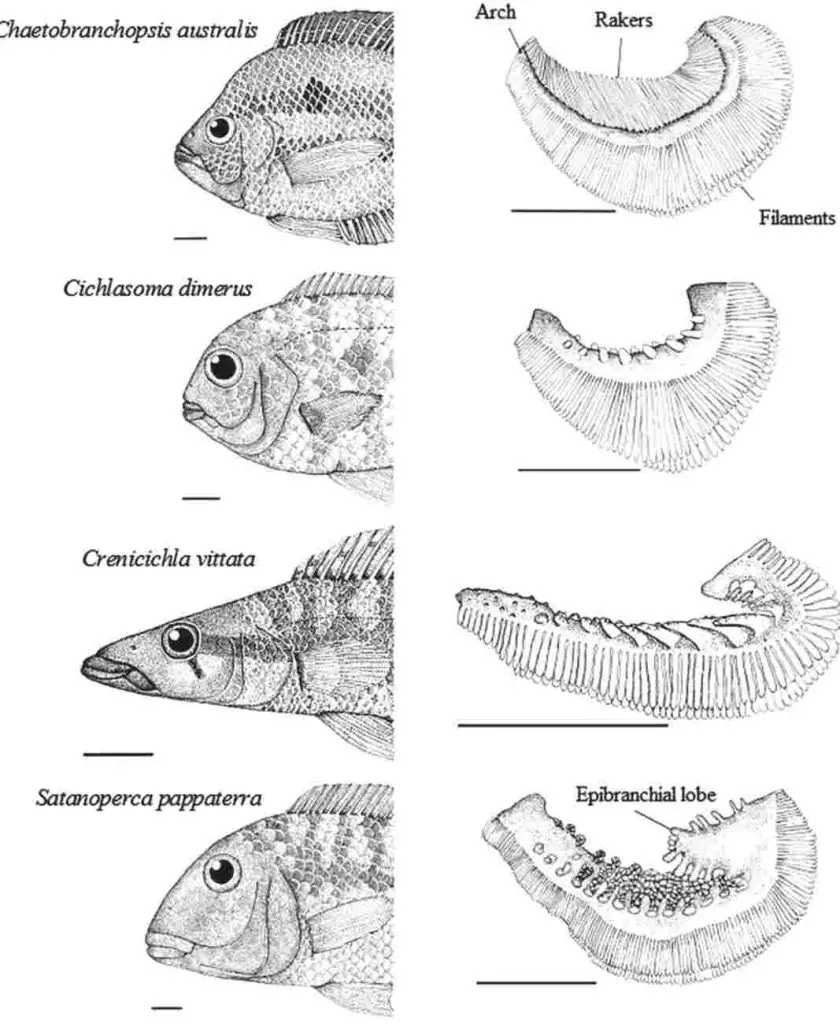
2. Gill Filaments (Primary Gill Lamellae) | Gill Plate
These are thin, hair-like structures that protrude from the gill arches. They are responsible for exchanging oxygen and carbon dioxide with the water. Gill filaments also called as primary lamellae.
3. Gill Lamellae (Secondary Gill Lamellae)
Gill lamellae are thin, flattened structures that are found on the gills of many aquatic animals, including fish and some crustaceans.
They are arranged in a series of stacked plates or sheets, and they are used to exchange gases with the surrounding water.
Each gill lamella is lined with tiny blood vessels called capillaries, which are surrounded by a thin layer of water.
As water flows over the gills, oxygen diffuses across the thin layer of water and into the blood vessels, while carbon dioxide diffuses out of the blood vessels and into the water.
The surface area of the gill lamellae is greatly increased by the presence of many folds and creases, which allows the animal to extract a large amount of oxygen from the water.
The efficiency of this process is further enhanced by the presence of specialized cells called gill cells or chromatophores, which contain pigments that help to extract oxygen from the water.
Other important parts of fish gill are,
Gill Slits
Gill slits are small openings found on the sides of the head of some aquatic animals, including fish, sharks, skates, and rays. These openings allow water to be drawn into the mouth and over the gills, which are located within the body cavity.
Gill slits are also known as branchial slits or pharyngeal slits. They are found in the pharyngeal region of the neck, which is the area behind the head and in front of the gills.

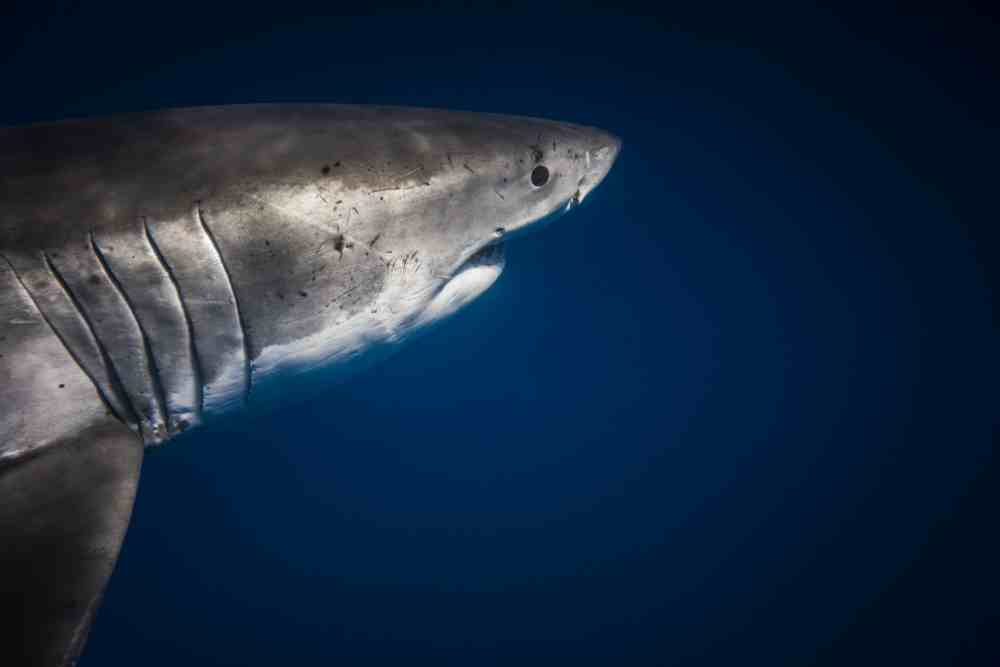
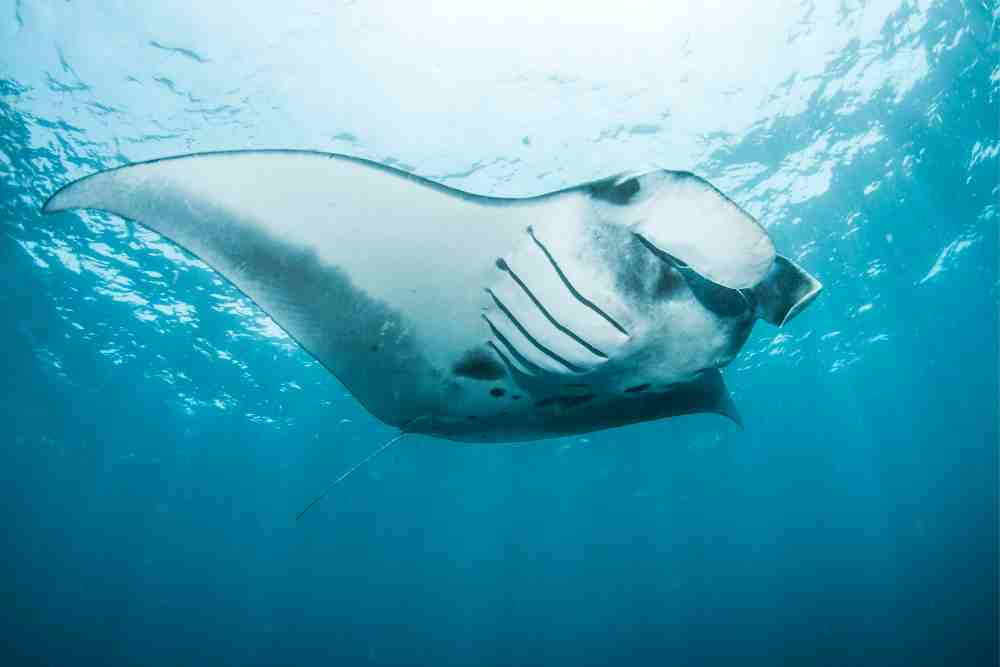
Operculum or Gill Cover
The operculum is a bony structure that covers and protects the gills in most species of fish. It is composed of two plates, known as the opercula, that are located on either side of the head, behind the eyes.
The opercula can be opened and closed to control the flow of water over the gills, which helps the fish regulate its respiration.
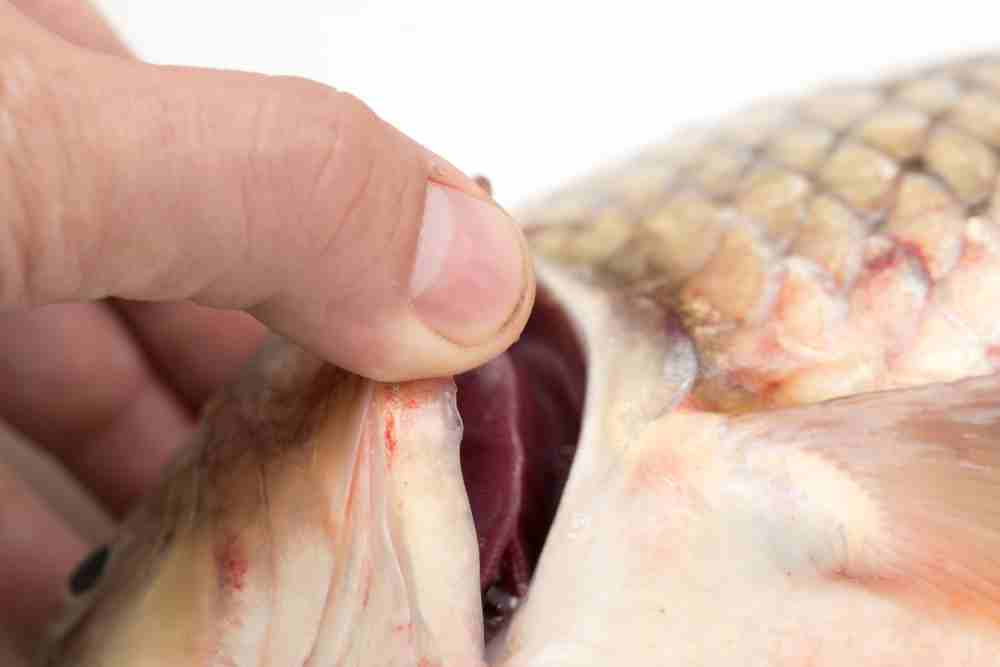
Operculum Cavity
It can be opened and closed to regulate the flow of water over the gills. Inside the operculum is the opercular cavity, which contains the gills.
In addition to serving as a respiratory organ, the operculum also helps to protect the gills from damage and parasites.
It also plays a role in the fish’s ability to swim and maneuver, as the opercula can be used to generate thrust and change direction.
Types of Gill
On the basis of appearance gills are two type;
- External gill
- Internal gill
| Features | External Gill | Internal Gill |
| Position | Outside the body | Inside the body |
| Branches | This gills have branches | This gills don’t have branches |
| Origin | Ectodermal in origin | Endodermal in origin |
| Examples | Amphibians such as Salamander, larval amphibians | Fishes |
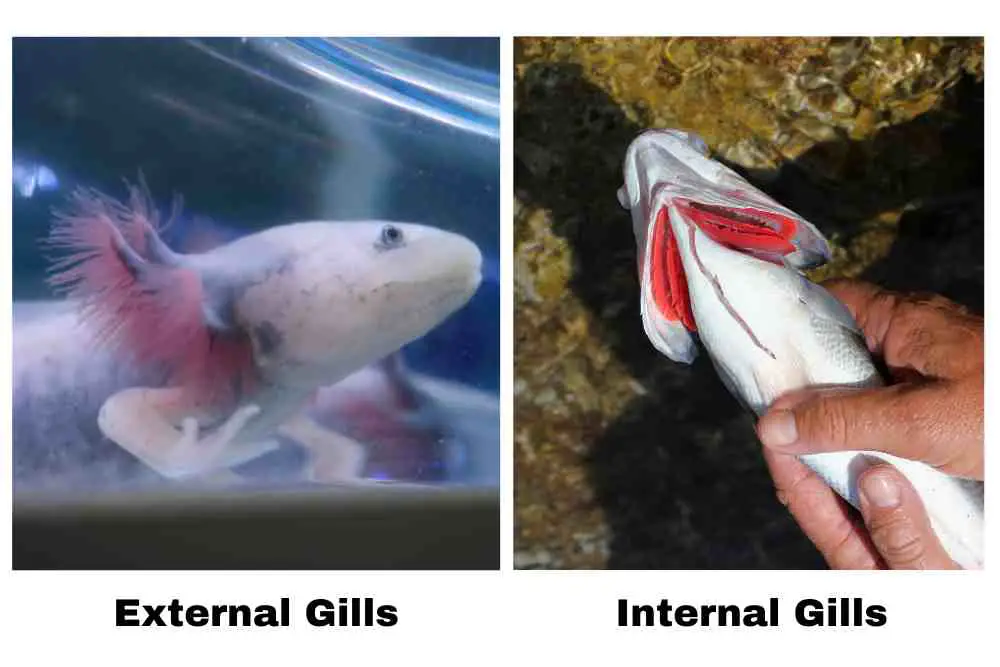
How Does Fish Gills Work? (Working Mechanism of Fish Gill)
Each gill is composed of filaments arranged in a protective framework of cartilage. Blood vessels carry oxygenated blood through the capillary-like walls of these filaments which then transfer the oxygen into the bloodstream.
At the same time, carbon dioxide is expelled from red blood cells into tiny air bubbles found between capillaries within each filament before being released from the fish’s body.
Fish use two main methods of gill ventilation to extract oxygen from the water: buccal pumping and ram ventilation.
1. Buccal Pumping
This is a method of gill ventilation that is used by many species of fish. It involves the fish opening and closing its mouth to draw water over the gills.
As the water flows over the gills, oxygen diffuses from the water into the blood vessels, where it is then carried to the rest of the body.
Buccal pumping is used by many species of fish, including bony fish, cartilaginous fish, and some amphibians.
2. Ram Ventilation
This is a method of gill ventilation that is used by some species of fish, such as salmon and trout.
It involves the fish swimming forward with its mouth open, drawing water over the gills as it goes.
As the water flows over the gills, oxygen diffuses from the water into the blood vessels, where it is then carried to the rest of the body.
Ram ventilation is used by some species of fish that are active swimmers and need a constant supply of oxygen to support their high metabolism.
Functions of Fish Gills
Fish gills serve several vital functions, primarily related to the respiratory and excretory processes necessary for the survival of aquatic organisms:
1. Respiration
The primary function of fish gills is to facilitate the exchange of gases, enabling the fish to extract oxygen from the surrounding water and release carbon dioxide.
Fish gills are highly vascularized, meaning they have a large network of blood vessels, which allows them to exchange oxygen and other gases with the water.
As water flows over the gill filaments, oxygen diffuses from the water into the fish’s bloodstream, while carbon dioxide moves from the bloodstream to the water.
2. Filtration and Particle Removal
Gill filaments are equipped with gill rakers, which help filter out solid particles, debris, and microorganisms from the water as it passes over the gills. This not only protects the delicate gill tissue but also ensures that only dissolved gases are exchanged during respiration.
3. Osmoregulation
The gills are also involved in maintaining the balance of electrolytes, such as sodium and potassium, in the body. Fish gills play a crucial role in maintaining the proper balance of ions and salts in the fish’s body, a process known as osmoregulation.
By actively transporting ions across the gill epithelium, fish can regulate their internal salt and water balance in response to changes in the external environment.
4. Excretion of Nitrogenous Wastes
As part of their metabolic processes, fish produce nitrogenous wastes, such as ammonia. Gills contribute to the excretion of these wastes by allowing the diffusion of ammonia from the fish’s bloodstream into the surrounding water.
5. Thermoregulation
In some fish species, gills play a role in thermoregulation by adjusting blood flow. This helps in maintaining an optimal internal temperature, especially in cold or warm water environments.
6. Defense Mechanism
The movement of water over the gills can create a current that aids in swimming and can serve as a defense mechanism. Fish gill create mucus that act as first line defense for fish. The sticky mucus of fish prevent, trap and kill microorganism to ovid their entry.
7. Sensory Functions
Gill arches may house sensory organs, contributing to the fish’s ability to detect changes in the water, such as temperature, pressure, and chemical composition. These sensory functions are important for navigation, finding mates, and avoiding predators.
Mucus in Fish Gill
Fish gill mucus plays a crucial role in maintaining the health and function of the gills, which are essential for respiration and overall well-being. Here are some key functions of fish gill mucus:
1. Protection against Pathogens
Gill mucus serves as a physical barrier that helps prevent the entry of pathogens, such as bacteria, viruses, and parasites, into the delicate gill tissue. It contains antimicrobial substances that can inhibit the growth and activity of potential harmful microorganisms.
2. Trap for Particulate Matter
The mucus layer on the gill surfaces acts as a sticky trap for particulate matter, including debris, dirt, and microscopic organisms present in the water. By capturing these particles, the mucus prevents them from reaching the sensitive gill filaments and interfering with respiratory processes.
3. Facilitation of Gas Exchange
The thin layer of mucus on the gill filaments helps maintain a smooth surface for efficient gas exchange. It prevents the gill filaments from sticking together, allowing water to flow smoothly over the gills and facilitating the diffusion of oxygen from water into the fish’s bloodstream.
4. Reduction of Friction
The mucus layer on the gill surfaces reduces friction as water flows over them during respiration. This reduction in friction ensures that the gill filaments remain flexible and functional, allowing for efficient gas exchange.
Frequently Asked Questions
Can you touch a fishes gills?
It is generally not recommended to touch a fish’s gills. The gills are delicate organs that are used for respiration, and handling them can cause damage or stress to the fish. In addition, some fish have sensitive skin and can be easily distressed by being handled.
If it is necessary to handle a fish, it is generally best to gently hold it by the body or base of the tail, rather than by the gills. This will minimize the risk of damaging the gills or causing stress to the fish.
If you need to examine a fish’s gills, it is generally best to do so in a controlled environment, such as in a tank or pond, rather than attempting to handle the fish directly. This will allow you to observe the gills without causing any harm to the fish.
Do humans have gill slits?
No, humans do not have gill slits. Gill slits are openings in the sides of the neck that are found in some aquatic animals, including fish and some amphibians.
Humans and other terrestrial animals breathe using lungs or other specialized respiratory organs, rather than using gills like fish and other aquatic animals do.
What is gill flukes in fish?
Gill flukes are parasitic flatworms that infect the gills of fish. They can cause a variety of health problems in infected fish, including breathing difficulties, reduced appetite, and weight loss. In severe cases, gill flukes can even lead to the death of the fish.
Once inside the fish, the flukes attach themselves to the gills and feed on blood and other tissue. They can reproduce rapidly, and a single fish can be infected with hundreds or even thousands of flukes.
Can a fish have both lungs and gills?
No, fish do not have both lungs and gills. Fish are aquatic animals that breathe using gills, which are specialized organs that are adapted for extracting oxygen from water.
Lungs are organs that are adapted for terrestrial animals breathing air, and they are not found in fish or other aquatic animals.
Can a human get gills? (Why do humans not have gills)
It is not possible for humans to naturally develop gills like fish have. Gills are specialized organs that are adapted for extracting oxygen from water, and they are not found in terrestrial animals such as humans.
What is the difference between gill rakers and gill filaments?
Gill rakers and gill filaments are two different structures found in the gills of fish. Both play a role in the process of respiration, but they have different functions.
Gill rakers are bony or cartilaginous structures that are found on the gill arches of fish. They are used to filter food particles and other debris out of the water as it flows over the gills. Gill rakers are found in most species of fish and are used to help the fish feed.
Gill filaments, on the other hand, are thin, thread-like structures that are found inside the gills. They are lined with tiny blood vessels, and it is through these blood vessels that oxygen and other gases are exchanged between the water and the fish’s bloodstream. Gill filaments are found in most species of fish and are a critical part of the fish’s respiratory system.
Can fish gills breathe air?
Fish gills are specialized organs that are adapted for extracting oxygen from water, not air.
How are gills different from lungs?
Gills and lungs are two essential organs used by animals to allow them to breathe. Although these two organs perform the same basic function, they do so in very different ways.
Gills are found in aquatic organisms such as fish, amphibians, crustaceans, and mollusks. They are thin sheets of tissue containing blood vessels that take oxygen from the water around them into the bloodstream. Gills also take carbon dioxide out of the organism’s body into the environment around it.
Lungs on the other hand exist in terrestrial species such as mammals, birds, reptiles and some insects. Lungs have a dense network of air sacs that fill with air when we breathe in through our mouth or nose.
Resources
- Wilson, J. M., & Laurent, P. (2002). Fish gill morphology: inside out. Journal of experimental Zoology, 293(3), 192-213.
- Dutta, H. M., & Datta-Mushi, J. S. (1996). Fish morphology. CRC press.
- Dineshbabu, A. P., Sasikumar, G., Rohit, P., Thomas, S., Rajesh, K. M., & Zacharia, P. U. (2013). Methodologies for studying finfish and shellfish biology, CMFRI-NICRA publication No. 2, Central Marine Fisheries Research Institute, Kochi. 91 p.